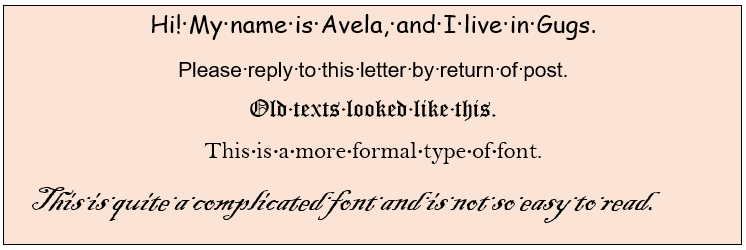
Text and Context
Here we deal with following instructions and requests and at how to use text-type, format and register on the correct level of formality. Different texts have different contexts and require us to respond in different ways. We need to ensure that we respond appropriately.
Request
Let us look at the text that consists of a request. Certain texts require us to respond in certain ways - we are asked or requested for example to supply our personal details when we apply for a student loan or bursary. There are times however when in order to respond to a request we would need more information. There are other times when in order to respond to a request we need to sort out the order of things being requested so as to be able to respond appropriately.
If you were asked to help a developing farmer choose the most suitable crops for her area you would first need to establish a lot more information about where her farm was, how much land she had, what type of soil she had and other relevant points. Requests are often, but not always, phrased as questions.
Instruction
Instructions can be defined in two ways:
Firstly as orders, e.g. "I was just following instructions when I forwarded that email"; "acting on instructions we received we went on to the next Lesson".
Or they can refer to a list of things to do; printed information about how to do, make, assemble, use, or operate something, e.g., "the instructions are printed on the back of the packet".
The difference between an instruction and a request lies in the responders choice. If you have no choice it is an instruction (even if the instructor asks nicely). If you do have a choice to do or not to do, then it is a request.
EXAMPLES:
Look at the following examples and decide whether they are instructions or requests.
- Finish the work today or you will be fired. - instruction
- Please go to Worcester then to Robertson. - instruction
- You must fill in this form. - instruction
- Will you help the grape grower choose his cultivars? - request
- You need to first check the plug and the switch carefully, then use the PowerPoint. -instruction
- Please fill in Section A followed by B, then C, then D - instruction
- Please could I have more information? - request
Text-Type
Text-type refers to the font you choose to use when using the word processor.
Here are some examples of text-type or font:

Text Format
Format refers to the structure of something; the way in which something is presented, organized, or arranged; specifically in this context, it refers to the way a written communication is presented or structured.
Register
Register in this context means the language of a type that is used in particular social situations or when communicating with a particular set of people, e.g., when speaking to her boss Meranisa used a formal register; when you are using slang you are using an informal register. We use different registers depending on whom we are communicating with and what the purpose of our communication is.
Friendly emails, notes or letters would tend to be written using an informal register if our purpose was to communicate with someone we know well.
Office memos, business letters, faxes (for official business) and business emails would be written using a formal register.
We all have the ability to use either register and we swap between the two depending on who our audience is. This is referred to as code-switching. Watch how your style changes depending on who you are writing to. A lecturer or a business associate would be very surprised to receive a letter that started with "Howzit?" and ended with "Lots of love"!